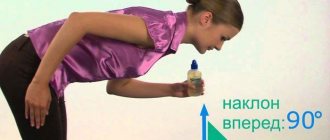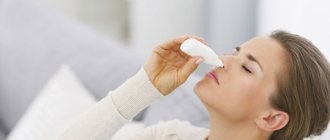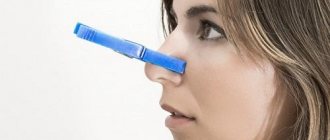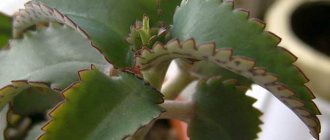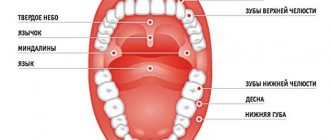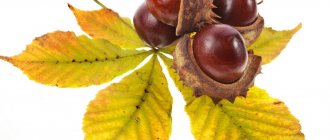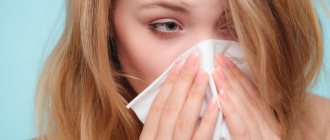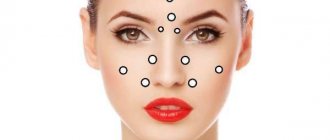Rinsing the nasopharynx is carried out to cleanse the nasal cavity of allergens, dust, and pathogenic microorganisms. This method greatly facilitates the well-being of sinusitis, sore throat, and runny nose.
You can rinse the nasal cavity not only for adults, but also for very young children, which allows you to reduce or eliminate the use of medications. This article will tell you how and with what to rinse the nasopharynx at home for adults and children.
Wash solutions
Rinsing the nasopharynx at home is carried out with medicinal compositions prepared from antibacterial components. Experts advise carrying out the procedure with the following types of solutions:
- The composition of sea salt is the most popular remedy. To prepare it you need to take 1 tbsp. l. salt per 1 glass of warm water. Rinse after the salt has completely dissolved. If necessary, sea salt can be replaced with table salt.
- Herbal solutions are made from a decoction of chamomile , string, and calendula. To prepare the composition, pour 1 cup of boiling water and 1 tsp. herbs. Leave for 15-20 minutes, then strain and use for rinsing.
- Furacilin is widely used for the treatment of ENT diseases. 1 tablet should be crushed and dissolved in 1 glass of boiling water.
- Propolis tincture. For 1 glass of warm water, take 10 drops of pharmaceutical infusion of propolis, 1 tsp. sea salt, 2 drops of iodine. Mix everything and use as intended.
- A solution of beets and honey. To make it, it is recommended to take 1 glass of fresh beet juice and warm water, 2 tbsp. l. flower honey. Mix everything thoroughly.
- Soda solution, for the preparation of which take 1/3 tsp. baking soda dissolved in 1 glass of warm water.
A combined procedure gives a good effect, in which the nasopharynx is first washed with ordinary boiled water, cooled to room temperature.
Then a soda composition is used, after which a layer composition is used and the procedure is completed with an iodine solution. The nasopharynx should be rinsed only with a freshly prepared solution, the temperature of which should be within 25 degrees.
Today there are many ready-made medicinal products that are made from sea water, these include:
- Aqualor;
- Salin;
- AquaMaster;
- Dolphin;
- Quicks;
- Aquamarine.
Advice: to consolidate the therapeutic effect after washing, you should not go outside for 2-3 hours.
How to rinse the nasopharynx at home: solutions and technique
Washing the nasopharynx is one of the methods for preventing acute respiratory and viral infections. Pharmacies provide customers with various sinus irrigators. In this article we will tell you how to rinse the nasopharynx from mucus for an adult and a child.
"Humer"
This product contains isotonic sterile sea water. Range of use:
- Used to prevent influenza and acute respiratory infections in children and adults.
- Can be used to clean out the sinuses of babies.
- Effective in removing mucus from the nose.
Release forms:
- spray with a special nozzle and atomizer (for adults and children);
- drops.
How to rinse your baby's sinuses? To irrigate the nasopharynx, you need to place the child on his side and alternately inject one or two drops of the product into each nasal sinus. Before using the drug, you should consult your doctor.
It should be noted that the following side effects may occur:
- redness of the mucous membranes,
- allergic reaction.
“Aqua Maris”
The solution contains purified water from the Adriatic Sea. Used to thin and remove mucus from the nasopharynx. Range of use of the drug:
- For cleansing the nose of babies.
- Prevention of infectious diseases.
- Treatment of rhinitis of various etiologies.
- For the prevention of infections of the nose and nasopharynx after surgery.
Release forms:
- Spray for children and adults.
- Bags of dry sea salt and essential oils for preparing a solution at home.
- Drops.
It should be noted that the solution is recommended for use in children over one year of age. “Dolphin”
Instructions for using “Dolphin” for nasal rinsing indicate that the dry mixture contains natural sea salt. Not recommended for use by children under four years of age. It is used to wash the nose and throat, and is widely used in the fight against adenoids. Can be used for the following conditions:
- Acute rhinitis.
- Respiratory diseases and influenza.
- Sinusitis of various etiologies.
- For rehabilitation after surgical intervention in the nasal passages.
The method of use in the instructions for use of "Dolphin" for rinsing the nose is described as follows:
- Prepare the solution according to the instructions.
- Place the patient on his side and irrigate the sinuses.
"Otrivin Baby"
The active ingredient is sea salt. Used to cleanse the nose in children under one year of age and older.
Release form:
- spray;
- nozzles for nasal irrigation with an aspirator.
Main indications for use:
- runny nose of various etiologies, colds;
- viral infections;
- nose cleaning.
"Aqualor"
This washing solution contains purified water from the Atlantic Ocean. It should also be noted that the manufacturer offers preparations with various salt concentrations.
It is used for:
- Hygienic cleansing of the nasal passages.
- In rehabilitation after surgery.
- Treatment of sinusitis and sinusitis of various etiologies.
- Prevention of inflammatory processes in the nasopharynx.
The product can be used by women during pregnancy and breastfeeding. Why rinse your nose with saline?
Rinse the nose with saline solution:
- for preventive purposes;
- as a moisturizer for the nasal mucosa (this is especially advisable to do in the autumn-winter period);
- for therapeutic purposes for various diseases of the nose and allergic rhinitis;
- flushing with saline removes allergens, bacteria and mucus accumulated there from the nasal mucosa.
The mucous membrane of the nasopharynx is obliged to protect the body from bacteria and viruses entering it, but if it dries out, it loses its own protective function, so viral infections descend lower. For this reason, it is necessary to moisten the nasal mucosa from time to time to maintain its protective functions. How to cook it?
Saline solution is a mixture of sodium chloride and clean water.
This kind of rinse is very easy to make. How to prepare your own saline solution to rinse your nose? Ordinary water is mixed with table salt in the following ratio: 1 g of salt is taken per 100 milliliters, that is, 2.5 g is required per glass, which is equal to half a teaspoon. Actually, this ratio gives a 0.9% solution. This indicator corresponds to the salt content in the blood plasma, which makes this solution the most physiological for the body. How to rinse the nasopharynx with saline solution?
There are a number of methods:
- Using a special nasal rinsing device. It looks like a teapot with a narrow spout and a handle for pouring the mixture. It is preferable to rinse the nose over a sink. Bending your head slightly to the side, pour the mixture into one nostril, the mouth should remain open - the mixture will flow out through it. If you want the mixture to come out of the other nostril, you should pronounce the sound “and” during the operation.
- Using a rubber bulb, syringe or syringe. Rinsing is performed using the same method as in point No. 1, only in this case we insert a syringe into the nostril and slowly press the mixture on it.
- You can simply scoop the mixture into your palms and suck it in through either nostril in turn. Next, we close the nostril and tilt our head in the opposite direction (the mixture will flow out of the other nostril). Or you need to throw your head back several times, so the solution will end up in your mouth, after which it is spat out. You can instill the product using a pipette or syringe. It is also possible to rinse your nose with saline using a nebulizer. This is probably the most practical method.
Folk remedies
Folk remedies used for rinsing the nasopharynx for various types of runny nose have long proven themselves to be an effective treatment that gives good results. In addition, they, as a rule, have a gentle effect and do not cause harm in the form of pathological changes in the nasal mucosa. Below are the most popular and most frequently used folk remedies for rinsing the nasopharynx at home:
- To relieve swelling of the nasal mucosa, use a solution of baking soda and salt in equal proportions.
- Perhaps the most popular remedy for purulent and bacterial types of runny nose is rinsing with a saline solution (ideally, sea salt should be used). The solution is made at the rate of a third of a teaspoon per glass of warm boiled water. If it is made on the basis of ordinary table salt, then to achieve the desired effect it is recommended to add a few drops of iodine.
- A medicinal plant such as chamomile, thanks to the essential oils and phytoncides it contains, has a good anti-inflammatory effect. Therefore, rinsing the nasopharynx with chamomile for a runny nose is used quite often. The infusion is prepared at the rate of 1 tablespoon of crushed flowers per 1 glass of water, it is boiled for several minutes and cooled to room temperature.
- Relieve inflammation of the nasopharynx by rinsing with the use of antiseptic herbal preparations with an antibacterial effect, which include, for example, sage, coltsfoot leaves, eucalyptus leaves, medicinal calendula flowers, as well as aloe and St. John's wort. To prepare the infusion, take 1 teaspoon of a mixture of crushed herbs per glass of water, pour boiling water over it and infuse for at least 10 minutes.
- To cleanse the nasopharynx of mucus, the popular method of rinsing the nose with a solution based on beet juice diluted with water (1:1) and adding two tablespoons of honey.
- Propolis is often used to rinse the nose in folk medicine. A few drops of pharmaceutical propolis tincture are usually enough per glass of water. It must be said that it is necessary to use folk remedies only after making sure that there is no allergy to their components.
Carrying out the procedure
To carry out rinsing, you need not only to stock up on the solution, but also special utensils. A small teapot with a spout or a syringe purchased at a pharmacy will do. There are three methods for rinsing the nasopharynx at home for adults and children:
- The procedure is carried out from one nostril to the other.
- It is possible to rinse from nose to mouth.
- If the previous methods fail to rinse, you can suck the solution into your nose and simply blow your nose.
Basic rules for rinsing the nasopharynx:
- It is necessary to rinse with warm water, which does not exceed 30 degrees. This will prevent burns to the nasopharynx.
- You should always use a freshly prepared solution.
- After the procedure, you should not go outside for the healing effect to take hold.
Washing is performed no more than 3 times a day. It is better to do this in the morning and before bed. To cleanse the nasopharynx, you need to choose a solution that can be used in any way, be it a syringe or drawing the product from your palms. How to perform the procedure correctly?
The syringe is filled with the solution. Then, leaning over the bathtub, turn your head so that one nostril is significantly higher than the other. When injecting the solution, take your time, slowly pressing on the syringe. Do not press roughly; the solution should flow out of the other nostril slowly. During the procedure, you must keep your mouth slightly open. This will prevent the solution from getting into your throat. Be careful: if the mucous membrane is swollen, fluid may not pass from one nostril to the other. In this case, raise your head up and lightly tap with your fingers where the passage of liquid is difficult. The next step is to blow your nose and remove the mucus. This manipulation frees the nasal passage from mucus. Then we rinse again, then blow our nose to remove everything that has lingered. If the nasopharynx is washed incorrectly, various complications may occur. The danger is that not only the solution, but also pathogenic bacteria can get into the ear. Also, too frequent rinsing can lead to disruption of the microflora in the nose and dry out the mucous membrane. The following products are best suited for rinsing the nose:
- herbal decoctions;
- saline solution;
- pharmaceutical drugs.
So, in order to effectively carry out the procedure, you need to know the simple rules for its implementation. Many people are interested in the question of how often you can rinse your child’s nose. It all depends on the drug, the age of the baby and, in fact, the disease. If rinsing does not help, consult a doctor who will prescribe effective treatment. Source: unique templates and modules for dle
Rinsing for adults
Only proper rinsing of the nasopharynx can guarantee the effectiveness of the procedure. Experts recommend rinsing the nasal cavity of adults in the following ways.
Using a syringe
This method is considered the easiest to implement. For adults, 10 and 20 ml syringes are suitable. The prepared solution should be drawn into the product with the needle previously removed. The tip of the syringe is inserted into the nostril, while gradually pressing on the piston and spraying the solution;
If your nose is stuffy, you should first drip vasoconstrictor medications, blow your nose, and only then begin the procedure of rinsing the nasopharynx.
Medical pear
Another common method is rinsing with a medical bulb. The prepared solution is drawn up by pressing on the body of the syringe while immersing it in the liquid. The tip of the bulb is then inserted into the nostril and the medicine is sprayed out using gradual pressure.
To avoid harming your nose, you should choose a syringe with a soft tip. For adults, it is recommended to use a 200 ml product, since this volume is necessary for high-quality rinsing of one nostril;
Tip: When blowing your nose, you should open your mouth slightly, this way you can avoid putting pressure on your eardrums.
Teapot with narrow spout
The vessel should be filled with solution and injected into the nostril. Gradually lifting the teapot, you need to carefully pour in the liquid, opening your mouth slightly. If the procedure is carried out correctly, the injected liquid exits through the oral cavity.
Washing should be done at least 2 times a day, after waking up and before going to bed.
Deep rinsing
This technique is quite difficult to master, but at the same time, it is perhaps the most effective. To clean the nasopharynx using this method, you need:
- Pour the rinse solution into a wide container with low sides, such as a shallow bowl.
- Take a second container of sufficiently large volume and place it on the table.
- With one hand, close the right or left nostril, and with the other, bring the container with the solution to your face.
- Immerse your open nostril in the liquid, positioning yourself so that there is a second, larger container under your chin.
- Begin to intensively draw in the solution through your free nostrils.
- At the same time, the mouth should be kept open - the liquid should flow freely from it, passing through the nasopharynx, and fall into the lower container.
- Repeat the procedure symmetrically for the second nostril.
Washing in children
It is necessary to rinse the child's nasopharynx with great care, since incorrect actions can lead to inflammation of the Eustachian tube. Before the procedure, you should clean the baby’s nasal passage with a cotton swab or aspirator. In pediatrics, it is allowed to rinse the nasopharynx in the following ways:
- Irrigation carried out with finished medicinal products. This method is the most gentle because it does not create backdraft, the solution flows out on its own. During the procedure, the baby should be helped to take a lateral position. If the child holds his head firmly, then it is allowed to rinse vertically. At the same time, for better flow of the solution, the baby’s head needs to be tilted slightly forward.
- A pipette into which to draw the composition. It is recommended to lay the baby on his side and instill 2-3 drops into each nostril. To prevent liquid from getting into the throat or ear, you need to hold the child’s head with your hand. After instillation, it is recommended to tilt its head back, so the medicine does not flow out of the spout.
- School-age children may inhale the medicinal solution. You need to fold your palms in the shape of a boat, into which the composition is poured. Ask the child to lean over the bathtub and inhale the prepared drug through the nose. The position of the body will cause fluid to flow from the nose, bypassing the throat.
Important! Children under 2-3 years of age should not be rinsed with a syringe or bulb, because thanks to the wide ear canals, the solution injected under pressure penetrates the ears, carrying pathogenic microorganisms with it.
Rinsing the nasopharynx, done at home twice a day, can significantly alleviate the condition and cleanse the nasal passages of allergens, dust, and bacteria.
Drip rinsing
Here, a pipette is used to deliver liquid into the nasal cavity. To ensure high-quality rinsing of the nasopharynx in this case, it is necessary to thoroughly blow your nose before starting the procedure. This will clear the nasal passages of mucus accumulated there and allow drops of the solution to freely penetrate into the nasopharynx.
Important! In young children who do not yet know how to blow their nose, you must first liquefy the mucus in the nose and remove it with gentle rotational movements of a dry cotton wool.
After the nasal passages have been cleaned, rinsing is performed in several stages:
- Pipette and hold it in your hand.
- Tilt your head back and close one nostril with your free hand.
- Insert the tip of the pipette into the open nostril and drop 5-8 (up to 10) drops of liquid into it.
- Remove the pipette from the nasal passage, place it on a napkin and pinch the nostril you just dropped.
- The head should also be tilted back - this will allow the solution to flow down the nasal passages directly into the nasopharynx.
- After 1-1.5 minutes, lower your head and open your nostrils. The liquid will begin to flow out on its own.
- Clean your nose by blowing your nose again - this will remove all the mucus that came from the nasopharynx along with the solution.
- Perform the same manipulations symmetrically for the other nostril.
For an infant, cleaning the nasopharynx using this method should be done by placing him on his back. The volume of liquid introduced into each nostril should not exceed 4-5 drops. After instillation, you need to turn the child on his stomach and lower his head, allowing the solution to flow out. Then you need to clean his nose again with cotton wool.

